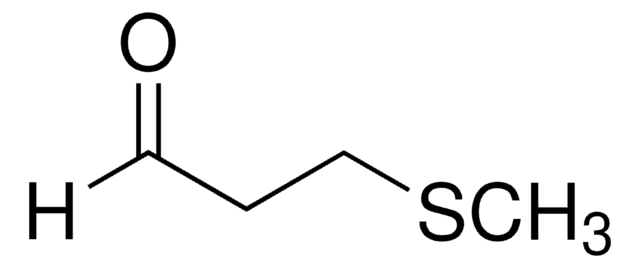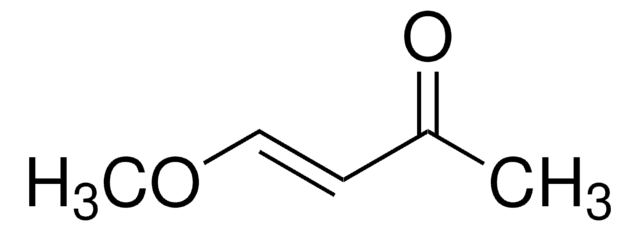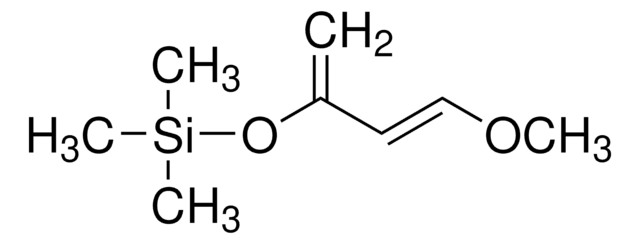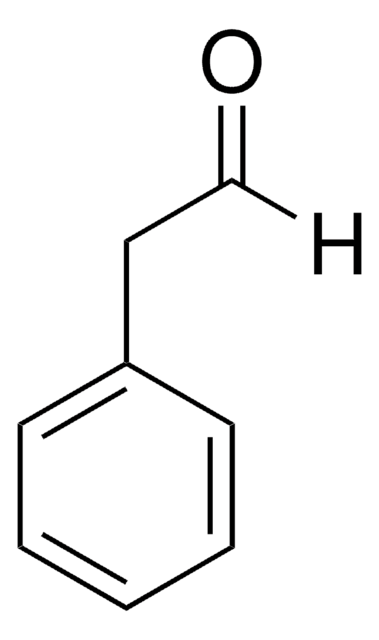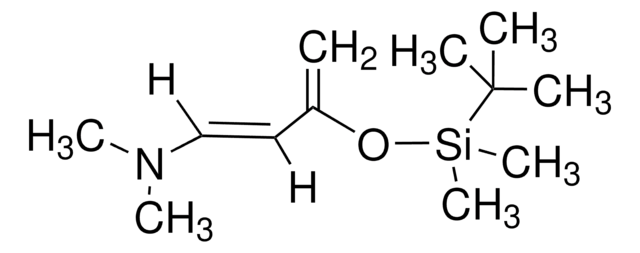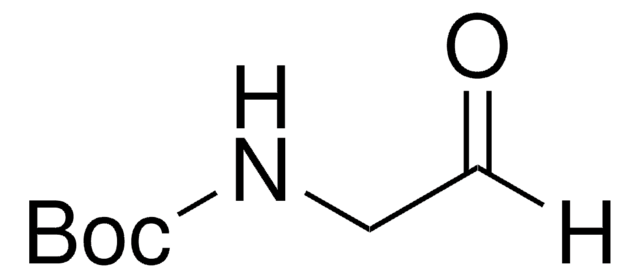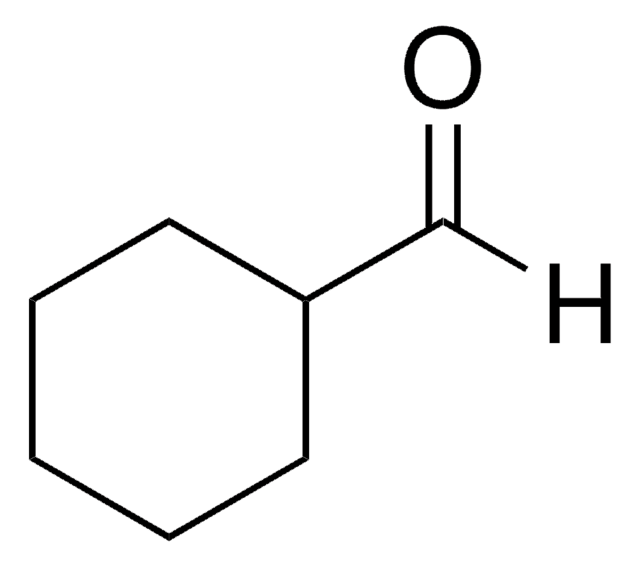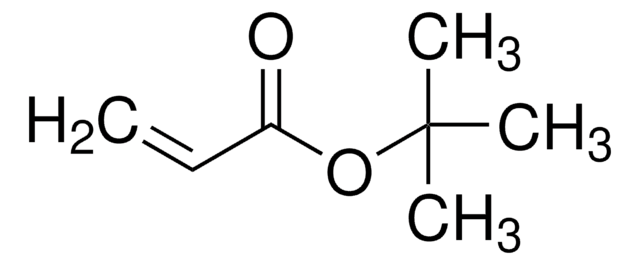277460
3-(Methylthio)propionaldehyde
96%
Synonyme(s) :
3-(Methylmercapto)propionaldehyde, 3-(Methylthio)propanal, Methional, NSC 15874
About This Item
Produits recommandés
Densité de vapeur
>1 (vs air)
Pression de vapeur
760 mmHg ( 165 °C)
Essai
96%
Forme
liquid
Indice de réfraction
n20/D 1.483 (lit.)
pb
165-166 °C (lit.)
Densité
1.043 g/mL at 25 °C (lit.)
Groupe fonctionnel
aldehyde
thioether
Température de stockage
2-8°C
Chaîne SMILES
CSCCC=O
InChI
1S/C4H8OS/c1-6-4-2-3-5/h3H,2,4H2,1H3
Clé InChI
CLUWOWRTHNNBBU-UHFFFAOYSA-N
Vous recherchez des produits similaires ? Visite Guide de comparaison des produits
Description générale
Application
- Oxidative coupling and chemoselective oxidation
- Intermolecular alkyne hydroacylation reactions
- Oxidation of sulfides to sulfoxides
Mention d'avertissement
Danger
Mentions de danger
Classification des risques
Acute Tox. 3 Dermal - Acute Tox. 4 Inhalation - Acute Tox. 4 Oral - Aquatic Chronic 3 - Eye Dam. 1 - Skin Irrit. 2 - Skin Sens. 1
Code de la classe de stockage
6.1C - Combustible acute toxic Cat.3 / toxic compounds or compounds which causing chronic effects
Classe de danger pour l'eau (WGK)
WGK 1
Point d'éclair (°F)
165.2 °F - closed cup
Point d'éclair (°C)
74 °C - closed cup
Équipement de protection individuelle
Faceshields, Gloves, Goggles, type ABEK (EN14387) respirator filter
Faites votre choix parmi les versions les plus récentes :
Déjà en possession de ce produit ?
Retrouvez la documentation relative aux produits que vous avez récemment achetés dans la Bibliothèque de documents.
Les clients ont également consulté
Notre équipe de scientifiques dispose d'une expérience dans tous les secteurs de la recherche, notamment en sciences de la vie, science des matériaux, synthèse chimique, chromatographie, analyse et dans de nombreux autres domaines..
Contacter notre Service technique